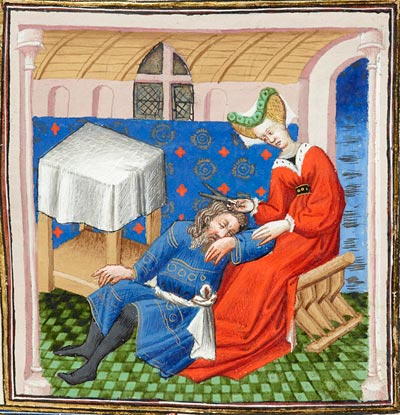
This exhibition explores the evolution of fashionable clothing in Northern Europe from the fashion revolution of the early fourteenth century to the dawn of the Renaissance. Drawn from the Morgan's collections, over fifty illuminated medieval and Renaissance manuscripts and early printed books are featured.
The nearly 200 years just prior to the Renaissance in Northern Europe constituted a fertile era for fashion, a period in which clothing styles changed rapidly, often from one decade to the next. The exhibition examines the role of social customs, cultural influences, and politics—such as the Hundred Years' War, the occupation of Paris by the English, and the arrival of the Italian Renaissance—in shaping fashion.
The exhibition also demonstrates the richness of symbolism in medieval art and how artists used clothing and costume as codes to help viewers interpret an image. In these works of art, what people wear is a clue to their identities and moral characters.
To dramatize these fashions, four recreated ensembles replicating clothing depicted in the exhibition are on view. The garments were made using period hand-sewing techniques and authentic materials—including silk velvet, gold brocade, linen, straw, and ermine.
This exhibition is generously underwritten by a gift in memory of Melvin R. Seiden, and by a grant from the Samuel H. Kress Foundation. Major support is provided by The Coby Foundation, Ltd., with additional assistance from the van Buren family in memory of Dr. Anne H. van Buren, and from the Janine Luke and Melvin R. Seiden Fund for Exhibitions and Publications.
![]()
![]()
Delilah Shearing Samson's Hair (detail), by the workshop of the Boucicaut Master. Bible historiale; France, Paris, ca. 1415–20. Pierpont Morgan Library, MS M.394, f. 112 (detail). From section 3: "Luxury in a Time of Madness, 1390–1420."
